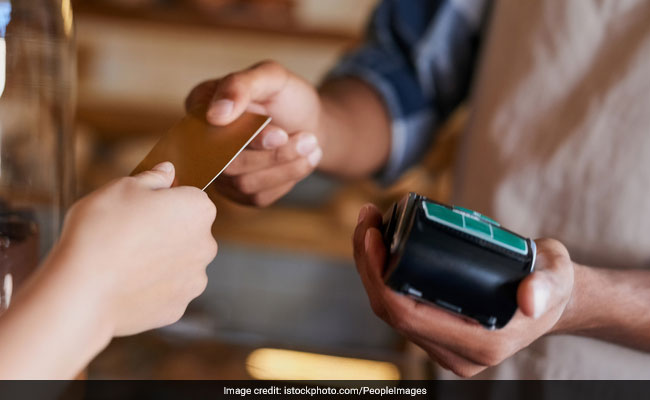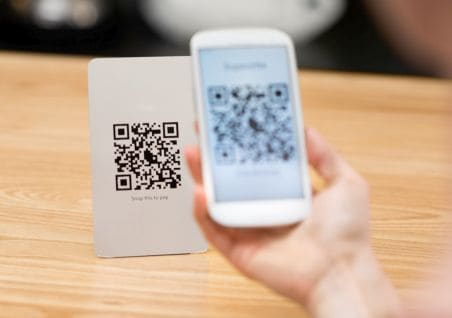- Cashless Bano India/
- Features/
- Going Cashless: What India Can Learn From These Countries That Have Successfully Adopted Digital Payments
Going Cashless: What India Can Learn From These Countries That Have Successfully Adopted Digital Payments

New Delhi: As India tries to move towards a cashless economy, various models and incentives are being implemented to bring more people under the ambit of a functioning cashless economy. India could learn from some of the European countries which have embraced digital payments successfully. Despite several roadblocks, achieving a cashless economy is not impossible, provided the infrastructure to support such an economy is in place. The logistical challenges in setting up the infrastructure in India are huge, these countries can help India understand the path to transition towards a cashless economy.
Sweden: Good Coverage Of Internet And Population With Bank Accounts
Sweden has made remarkable progress in terms of moving towards a cashless economy. A study by Deutsche Bundesbank from Germany revealed that 96 per cent of the Swedish population own a debit card and 89 per cent of consumer payments are made digitally, using credit/debit cards, mobile wallets or payment apps. Since 1991, Sweden has encouraged the use of debit cards for consumer purchase by providing debit cards to account holders and install Point of Sale (PoS) machines in retail outlets. The practice of using digital currency has also been encouraged by the government, as by 1995, 97 per cent of the population had bank accounts with functional debit cards, assisting them in conducting cashless transactions. The KTH Royal Institute of Technology at Sweden estimates that by 2030, Sweden will become a fully functional cashless economy. This achievement has been made possible largely due to a majority of the population having bank accounts. 90.6 per cent internet penetration has also ensured that people can conduct cashless transactions at ease.
While Sweden's population is 0.7 percent of India's, but even then India will need to improve on both these fronts drastically for digital payments to grow - population with active bank accounts and access to internet. Currently, India has 75 per cent of the population with bank accounts, of which 27 per cent have debit cards and 1.8 per cent has credit cards.
Belgium - Cap On Cash Transactions And A Unified Mobile App
Belgium has also moved successfully towards a cashless economy, as 93 percent of the Belgian population opt for cashless transactions in the country. To encourage cashless transactions, the Belgian government has imposed a limit of 3000 euros (or about Rs 2,16,000) in cash transactions. The mobile app Sixdots is also widely used by people in the country. A majority of the Belgian banks support this app, so that people can conduct bank transactions smoothly without resorting to cash. The biggest advantage of this app has been the fact that 4 major Belgian banks, which total for 80 per cent of the Belgian market, have supported the app, so that a majority of the population can sync their bank accounts with the payment app for use.
In India, the current cap at cash transaction right after demonetisation was restricted to Rs 24,000, but has been increased to Rs 3 lakh post that. While government has introduced BHIM app, which on last count had more than 10 million downloads, there are other payment apps too, such as PayTM, Mobikwik, Oxigen Wallet, M-Pesa etc.
Given the absence of internet and PoS infrastructure in rural areas, India can also look at how the countries Somaliland and Kenya adopted cashless measures. Both Kenya and Somaliland are poorer countries in terms of economic growth, when compared to India. But both these countries have equipped the rural poor with bank accounts and improved the digital payment structure. M-Pesa a mobile based money transfer app has brought a digital revolution in Kenya, by enabling cash transactions using mobile phones. More than two-thirds of Kenya's adult population has now began using M-Pesa. This is a stellar example for India to follow, because in places where installation of PoS systems is difficult, mobile wallets can be used for cashless transactions. By using M-Pesa, people can create an account in their mobile phones and deposit money. They can then conduct transactions using the M-Pesa app, utilising the account balance. In public transport systems in Somaliland, the government introduced cashless payments in public transport systemd, schools, and hospitals to lessen the dependency on cash, in 2005. This prompted people to further use cards to conduct transactions. An average consumer makes 34 digital transactions a month in Somaliland, the highest in the world.
NITI Aayog CEO Amitabh Kant had recently said that India is at a threshold of digital revolution and the country will see tremendous development in the field of digital payments, in the next few years. While the geographical density of India is more than any of the above mentioned countries, a step-by-step and strategic approach in implementing cashless initiatives will see better success. Bringing public transport and services under the ambit of cashless payments, encouraging rural population to use mobile wallets and better penetration of internet are some of the steps which ought to be prioritised by the government if India is to go cashless within the next few years.
Also Read: Universities And Colleges Are Going Digital To Eliminate Cash Payments
Sweden: Good Coverage Of Internet And Population With Bank Accounts
Sweden has made remarkable progress in terms of moving towards a cashless economy. A study by Deutsche Bundesbank from Germany revealed that 96 per cent of the Swedish population own a debit card and 89 per cent of consumer payments are made digitally, using credit/debit cards, mobile wallets or payment apps. Since 1991, Sweden has encouraged the use of debit cards for consumer purchase by providing debit cards to account holders and install Point of Sale (PoS) machines in retail outlets. The practice of using digital currency has also been encouraged by the government, as by 1995, 97 per cent of the population had bank accounts with functional debit cards, assisting them in conducting cashless transactions. The KTH Royal Institute of Technology at Sweden estimates that by 2030, Sweden will become a fully functional cashless economy. This achievement has been made possible largely due to a majority of the population having bank accounts. 90.6 per cent internet penetration has also ensured that people can conduct cashless transactions at ease.
While Sweden's population is 0.7 percent of India's, but even then India will need to improve on both these fronts drastically for digital payments to grow - population with active bank accounts and access to internet. Currently, India has 75 per cent of the population with bank accounts, of which 27 per cent have debit cards and 1.8 per cent has credit cards.
Belgium - Cap On Cash Transactions And A Unified Mobile App
Belgium has also moved successfully towards a cashless economy, as 93 percent of the Belgian population opt for cashless transactions in the country. To encourage cashless transactions, the Belgian government has imposed a limit of 3000 euros (or about Rs 2,16,000) in cash transactions. The mobile app Sixdots is also widely used by people in the country. A majority of the Belgian banks support this app, so that people can conduct bank transactions smoothly without resorting to cash. The biggest advantage of this app has been the fact that 4 major Belgian banks, which total for 80 per cent of the Belgian market, have supported the app, so that a majority of the population can sync their bank accounts with the payment app for use.
In India, the current cap at cash transaction right after demonetisation was restricted to Rs 24,000, but has been increased to Rs 3 lakh post that. While government has introduced BHIM app, which on last count had more than 10 million downloads, there are other payment apps too, such as PayTM, Mobikwik, Oxigen Wallet, M-Pesa etc.
Given the absence of internet and PoS infrastructure in rural areas, India can also look at how the countries Somaliland and Kenya adopted cashless measures. Both Kenya and Somaliland are poorer countries in terms of economic growth, when compared to India. But both these countries have equipped the rural poor with bank accounts and improved the digital payment structure. M-Pesa a mobile based money transfer app has brought a digital revolution in Kenya, by enabling cash transactions using mobile phones. More than two-thirds of Kenya's adult population has now began using M-Pesa. This is a stellar example for India to follow, because in places where installation of PoS systems is difficult, mobile wallets can be used for cashless transactions. By using M-Pesa, people can create an account in their mobile phones and deposit money. They can then conduct transactions using the M-Pesa app, utilising the account balance. In public transport systems in Somaliland, the government introduced cashless payments in public transport systemd, schools, and hospitals to lessen the dependency on cash, in 2005. This prompted people to further use cards to conduct transactions. An average consumer makes 34 digital transactions a month in Somaliland, the highest in the world.
NITI Aayog CEO Amitabh Kant had recently said that India is at a threshold of digital revolution and the country will see tremendous development in the field of digital payments, in the next few years. While the geographical density of India is more than any of the above mentioned countries, a step-by-step and strategic approach in implementing cashless initiatives will see better success. Bringing public transport and services under the ambit of cashless payments, encouraging rural population to use mobile wallets and better penetration of internet are some of the steps which ought to be prioritised by the government if India is to go cashless within the next few years.
Also Read: Universities And Colleges Are Going Digital To Eliminate Cash Payments
Published: June 14, 2017 11:17 IST
About The Campaign

NDTV along with MasterCard is launching a multi-platform campaign “Cashless Bano India”, to create digital awareness and educate the masses about digital payment solutions for day to day transactions.
The campaign aims to take the message of a cash free India to the country, all while educating them on the ways and means to do it.
We aim to reach out to people and educate them on:
1). Digital and financial literacy
2). New generation digital payment solutions
3). Enabling merchants and consumers to understand and adopt secured and safe payment Solutions
4). Ease of usage at point of sales
Comments


